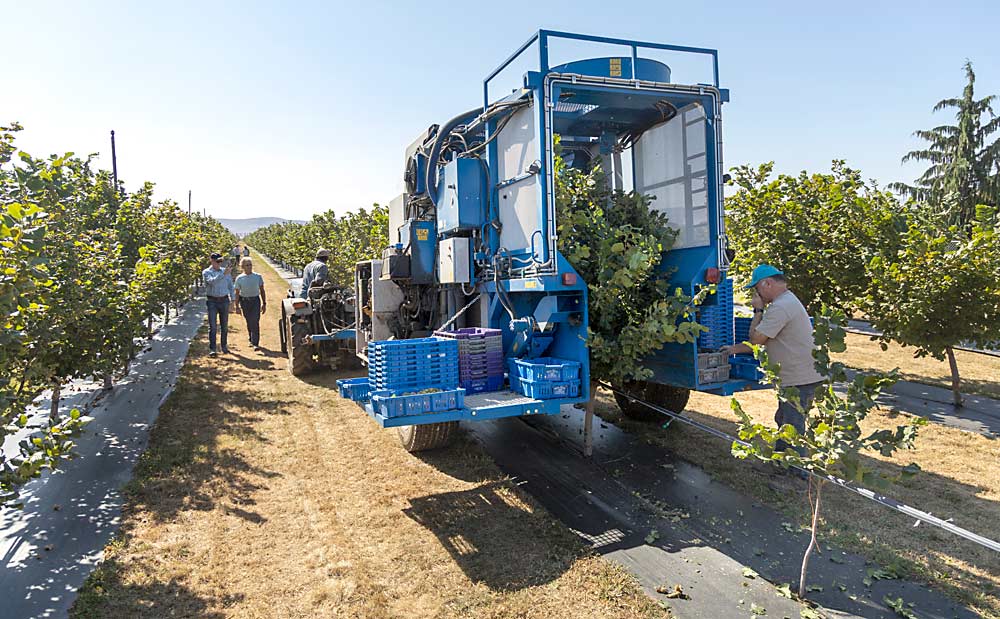
To achieve the dream of mechanical harvest, a few Yakima Valley orchardists are turning to an entirely new tree crop: hazelnuts.
They trace the idea back to Jim Canaday, a small grower from Wapato who hopes his retirement experiment sparks a revolution by proving that the nut traditionally grown in Oregon’s Willamette Valley, with its Mediterranean-type climate, can grow just fine in Eastern Washington’s arid valleys.
Even better: It can be done organically for a premium return, said Canaday, who was inspired to plant hazelnuts after his career in the California cherry industry overlapped with the almond boom.
“I had this ground here and wanted to do something that was low in labor after I retired,” he said. “There’s nothing to do but plant the trees and irrigate.”
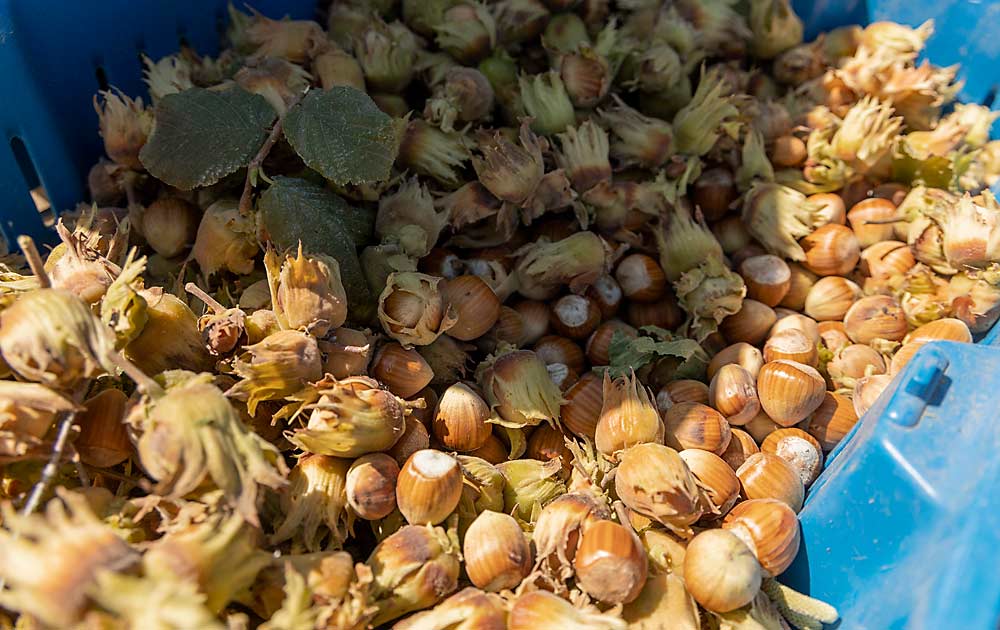
That message is enticing to orchardists facing rising labor costs. During a late August field day organized by the Eastern Washington Hazelnut Association, this Good Fruit Grower editor saw more than a few familiar faces. When asked why they were interested in hazelnuts, they all pointed to the low labor needs.
“We’re looking at if they could be as easy as Concords,” said Keith Oliver, of Olsen Bros., a tree fruit and grape business in Prosser. He hasn’t planted any yet, but he’s closely watching others’ trials.
It is indeed very similar to juice grapes in terms of inputs, said Piper Hale, who convinced his parents to plant about 20 acres of hazelnuts on their Wapato farm six years ago. Concord prices had tanked, forcing them to pull some acreage. Apples seemed like too much work, but hazelnuts are managed mechanically, don’t need any pesticides in the dry region (at least so far), and he even harvests them with a grape harvester.
“We needed an alternative,” Hale said. “I think that’s where a lot of growers are, too: They have apples or grapes that need to come out, and this gives them an alternative that uses their existing infrastructure.”
Anticipating and encouraging this interest, Canaday partnered with his neighbors, blueberry growers Jeff and Terri Weijohn, to not just test hazelnut trees but also to start their own nursery, Blue Sky Hazelnut Trees, while their own farms serve as proving grounds to new-to-nuts customers. Meanwhile, the Hales invested in receiving and processing equipment they brought up from Oregon in 2020, and it could eventually handle up to a million pounds a year.
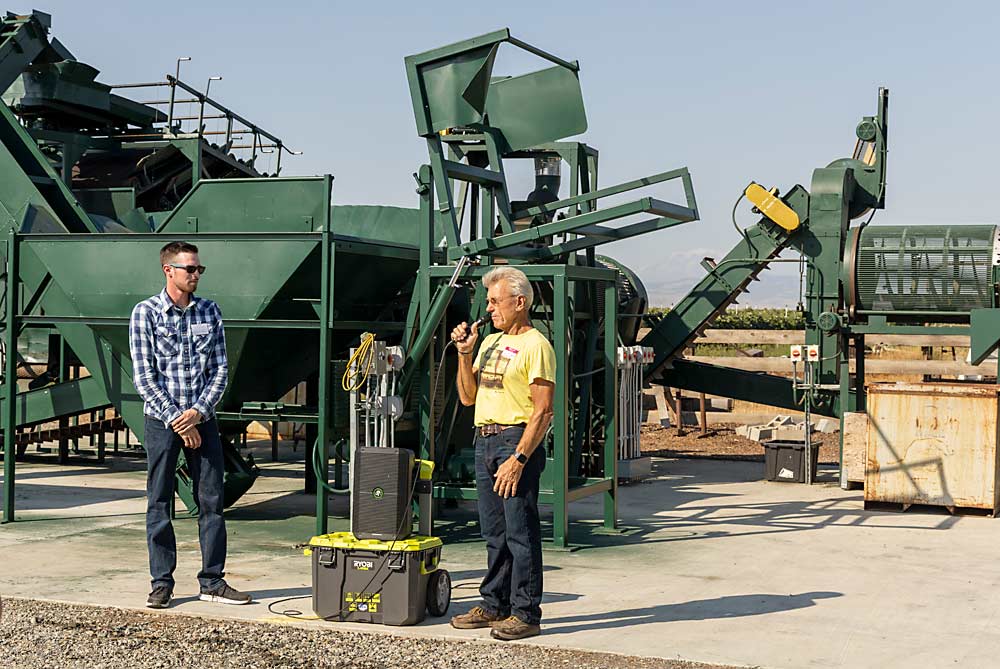
There’s nowhere near that kind of production in Washington, Hale added, but more young orchards are going in and coming into production every year.
“We have to be ready for when that trickle starts coming in,” he said.
Fruit influence
The Canaday and Weijohn orchards bear little resemblance to Willamette Valley nut groves, where dry-farmed trees planted at 100 trees to the acre can reach 40 feet tall. The fruit industry’s influence on the young Wapato plantings is unmistakable, from the apple-inspired hedging and high-density planting to the blueberry-borrowed weed mats and over-the-row mechanical harvester.
The tour visited Weijohn’s fourth-leaf, trellised planting, spaced with 6 feet between trees and 10 feet between rows, which he plans to prune mechanically as much as possible.
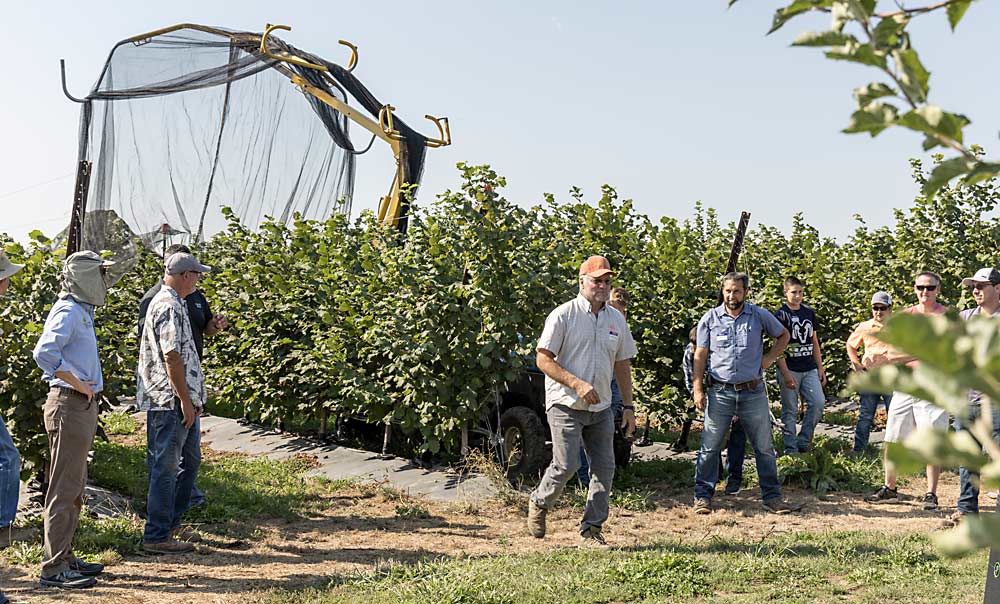
“Everything we are trying to do is to cut back on labor,” he said. More research is needed on the optimum timing for summer pruning, he said, depending on when each variety sets the catkins that will become the next year’s fruit.
The high-density approach is resonating with fruit growers.
“It works in tree fruits, why wouldn’t it work in hazelnuts?” said Phil Cline, who manages orchards and vineyards in the Naches Heights area and planted several acres of hazelnuts at 8 feet by 12 feet for a client in 2021.
“I think they’ll be very manageable in the future, and we haven’t sprayed yet for anything,” Cline said.
Chad O’Brien, an orchardist from Prosser, planted his first hazelnut block at a 6-by-12 spacing last year, and he plans to harvest with a grape harvester, at least initially.
“The first few years was figuring out how to grow the trees. Now, the big push is how are we going to harvest,” Canaday said as he watched Weijohn’s Kokan blueberry harvester pass over his 7-year-old trees in September.
At first glance, they were impressed with how gentle the harvester was on the trees. But Canaday still needed to crunch some numbers on its efficiency.
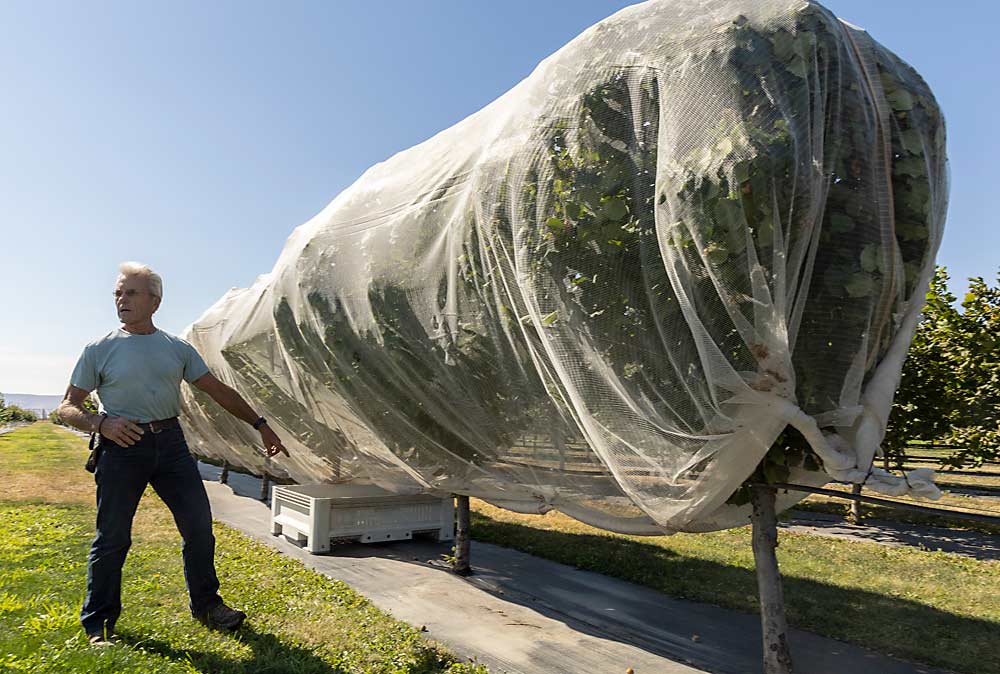
Unlike almonds, hazelnuts don’t need to be shaken off the trees. They naturally fall when mature, over a period of about a month. That might require multiple passes or a new passive harvest approach, such as netting that Canaday tested on some neighboring rows.
He got the idea from a conversation with a Drape Net representative at last year’s Northwest Hort Expo. Canaday zip-tied the nets below the trees, to collect the nuts — and protect them from thieving rodents — and once they all fall, he’ll cut the ties to empty the nets into bins. Eventually, he hopes to partner with a custom equipment manufacturer to make a bin trailer to catch the nuts as the nets are opened.
That’s the sort of innovation that happens when you give the fruit industry a new crop, Cline said.
“We have all that experience from all the other things we’re doing. That’s why you see the innovation here,” whereas Oregon hazelnut growers do things the traditional way, he said.
The nascent Washington industry has turned to Oregon growers and Oregon State University researchers for advice, but the climate and the planting systems are very different. That’s why the new Washington growers’ association is so important, Canaday said.
“We’re doing stuff that no one else is doing. We need everyone with nuts in the ground doing research, keeping notes and sharing,” he said.
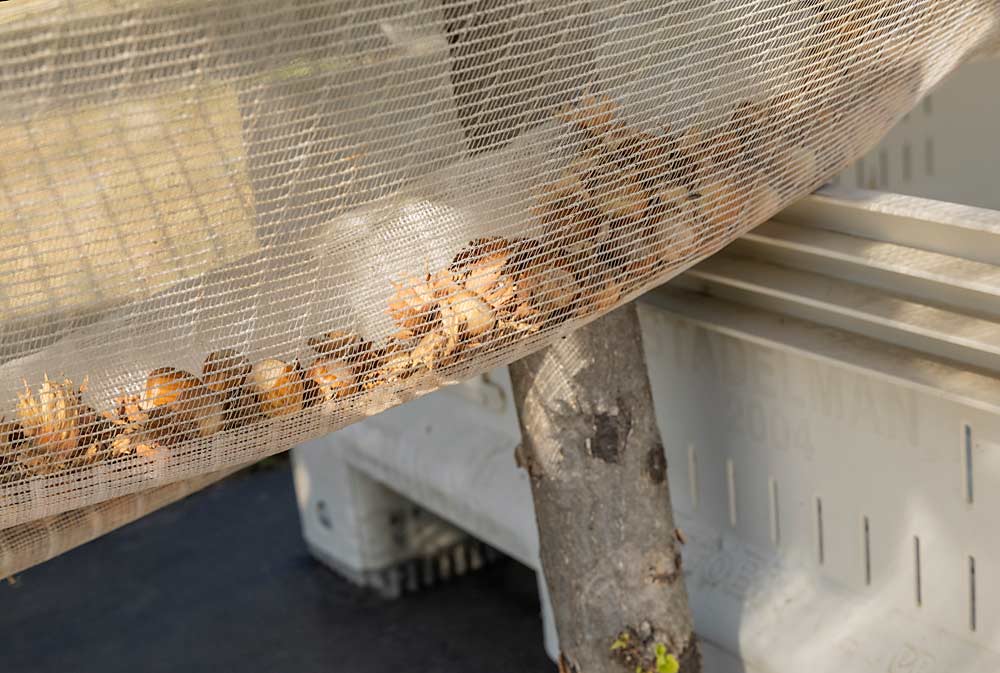
—by Kate Prengaman






Leave A Comment